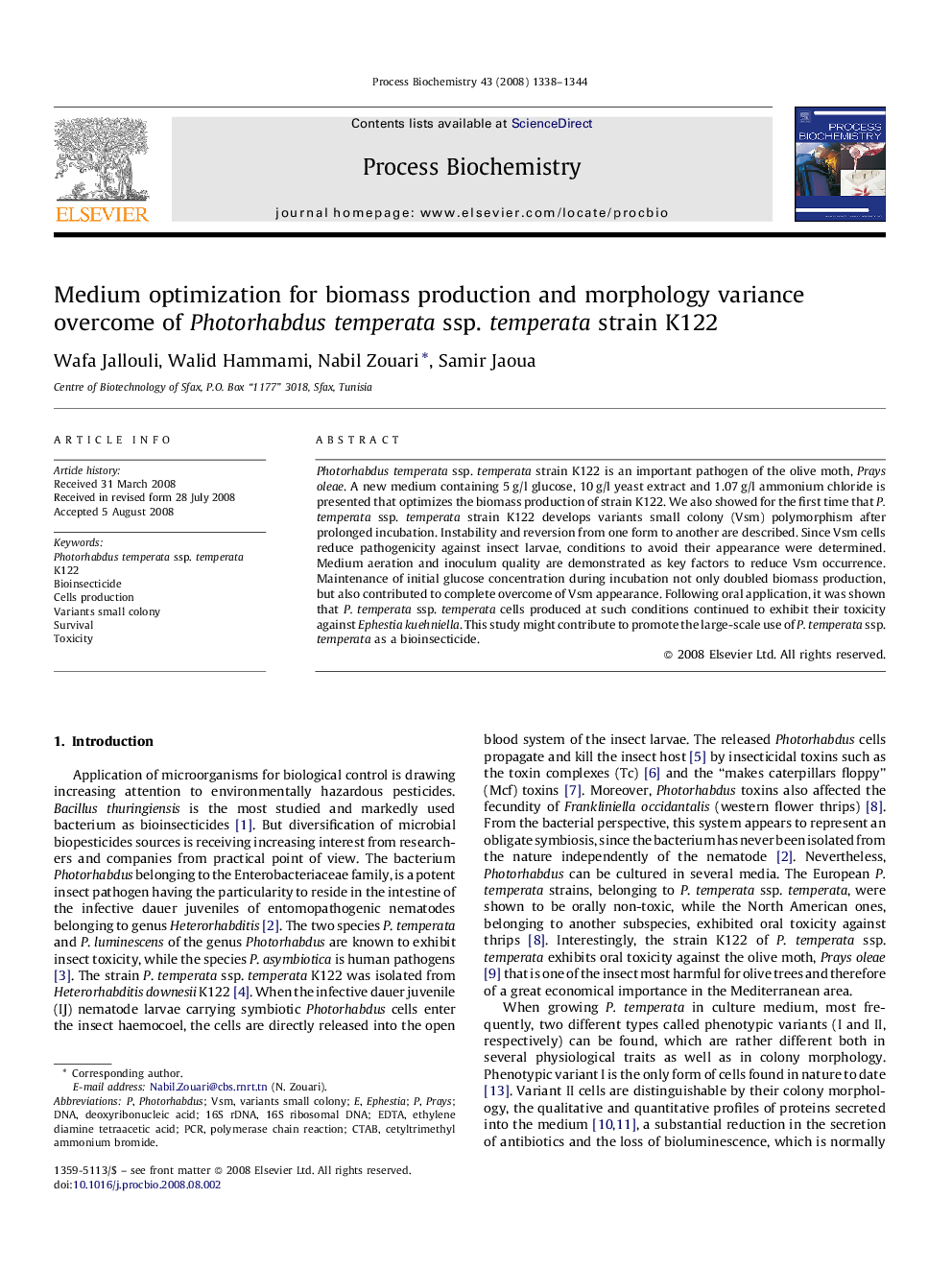| Article ID | Journal | Published Year | Pages | File Type |
|---|---|---|---|---|
| 35747 | Process Biochemistry | 2008 | 7 Pages |
Photorhabdus temperata ssp. temperata strain K122 is an important pathogen of the olive moth, Prays oleae. A new medium containing 5 g/l glucose, 10 g/l yeast extract and 1.07 g/l ammonium chloride is presented that optimizes the biomass production of strain K122. We also showed for the first time that P. temperata ssp. temperata strain K122 develops variants small colony (Vsm) polymorphism after prolonged incubation. Instability and reversion from one form to another are described. Since Vsm cells reduce pathogenicity against insect larvae, conditions to avoid their appearance were determined. Medium aeration and inoculum quality are demonstrated as key factors to reduce Vsm occurrence. Maintenance of initial glucose concentration during incubation not only doubled biomass production, but also contributed to complete overcome of Vsm appearance. Following oral application, it was shown that P. temperata ssp. temperata cells produced at such conditions continued to exhibit their toxicity against Ephestia kuehniella. This study might contribute to promote the large-scale use of P. temperata ssp. temperata as a bioinsecticide.
